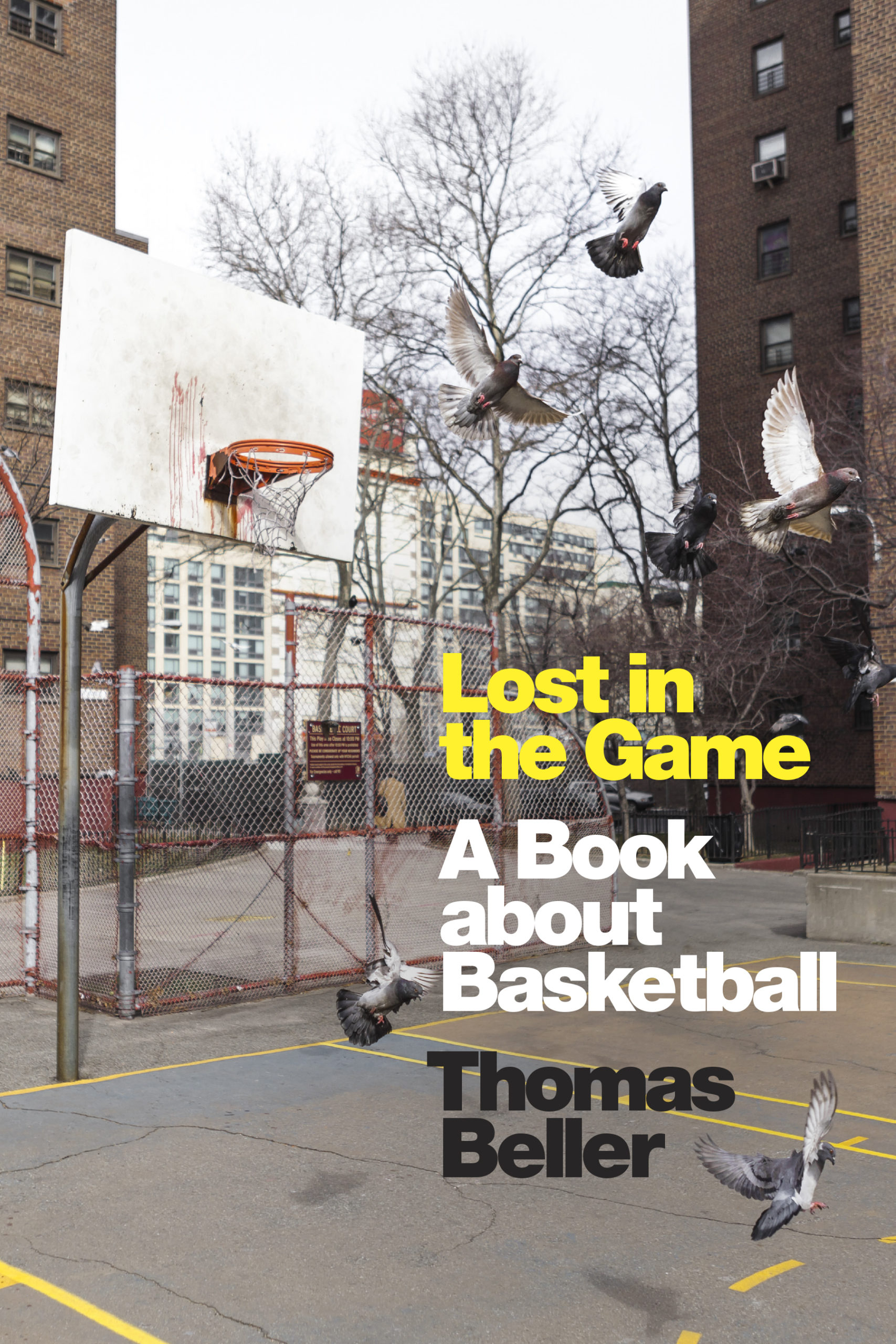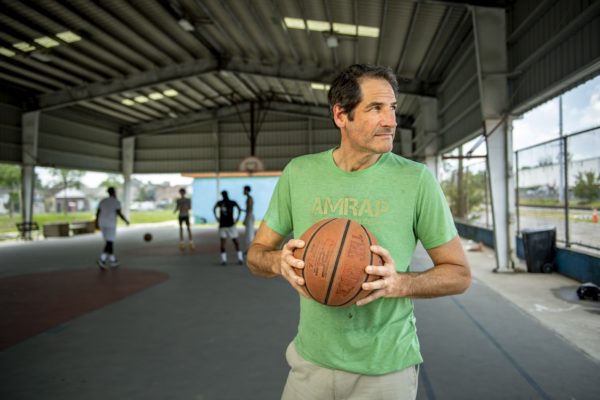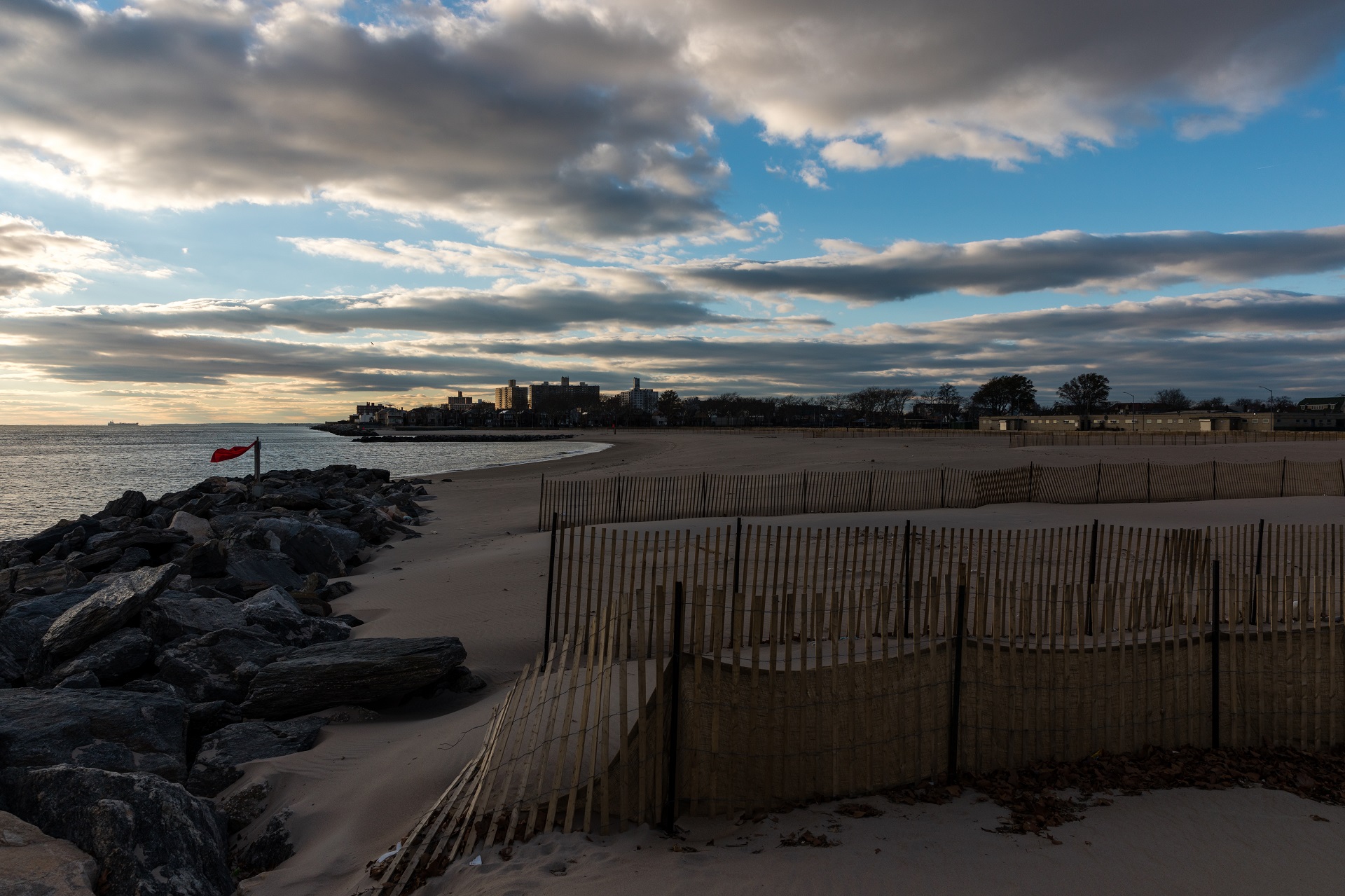Brooklyn BookBeat: Lost and found
Review of Lost in the game: a book about basketball

It’s rare that writers on basketball criss cross their attention from playground and pickup ball to the NBA. Thomas Beller writes personal essays about basketball from the perspective of an amateur ballplayer, lifelong fan and as a professional journalist. The New Yorker magazine veteran and author of several books is a literary innovator who in 2000 created Mr. Beller’s Neighborhood, a website devoted to the best most personal local New York essays. He is also a biographer of J. D. Salinger, and, most importantly for the purpose of this collection, a basketball-addict: “It recently occurred to me that I was fluent in a foreign language. A language that is so intuitive that I forget other people don’t understand. I was playing pickup basketball in Brooklyn Bridge Park, where I was meeting a friend. She showed up, watched the game. ‘I could see people were following a code of behavior and a set of rules that everyone in the game understood,’ she said later. ‘But I had no idea what they were.’ If only this were a sort of thing one could put on a curriculum vitae. ‘Languages: English, pickup basketball.’”

The 28 pieces that comprise Lost in the Game, some published here for the first time, a few with brand-new postscripts, are about what it’s like to play basketball, what it’s like to talk to and watch the greatest players in the world, what it’s like to brood about and anticipate playing on local courts, how it feels to puzzle over one’s playground mates and adversaries, and wonderfully, what basketball has meant to New York City children (and grownups) for the last 80 years, thanks in part to the man many of us learned from Robert Caro’s The Power Broker to regard as a thorough villain, New York’s master builder (and bulldozer) in the mid-twentieth century: “New York City has, I would venture to say, more actual hoops attached to backboards than any other city in the world, and the person most responsible for this fact is Robert Moses.” I will never get out of my head Beller’s remarkable observation about our city’s basketball courts: “In a dense, vertical town they are like asphalt meadows, a dull gray flatness, sometimes painted Parks Department green, that is like an Etch-A-Sketch on which complex arrangements are traced every day and then erased every night, to begin again the next morning.”
Jumping from Kevin Durant to Latrell Spreewell to equally colorful playground characters, Beller never confuses or deludes himself or us. On the courts, the distance between NBA professionals and us amateurs is huge, unbridgeable — except when it isn’t, and that’s in the awareness he gives us of intimate and particular personalities, reflected on and off the court. After reading the funny and discerning “The Jokic Files” I will never watch Nikola Jokic (or his brothers on the sidelines) the same as I had.
